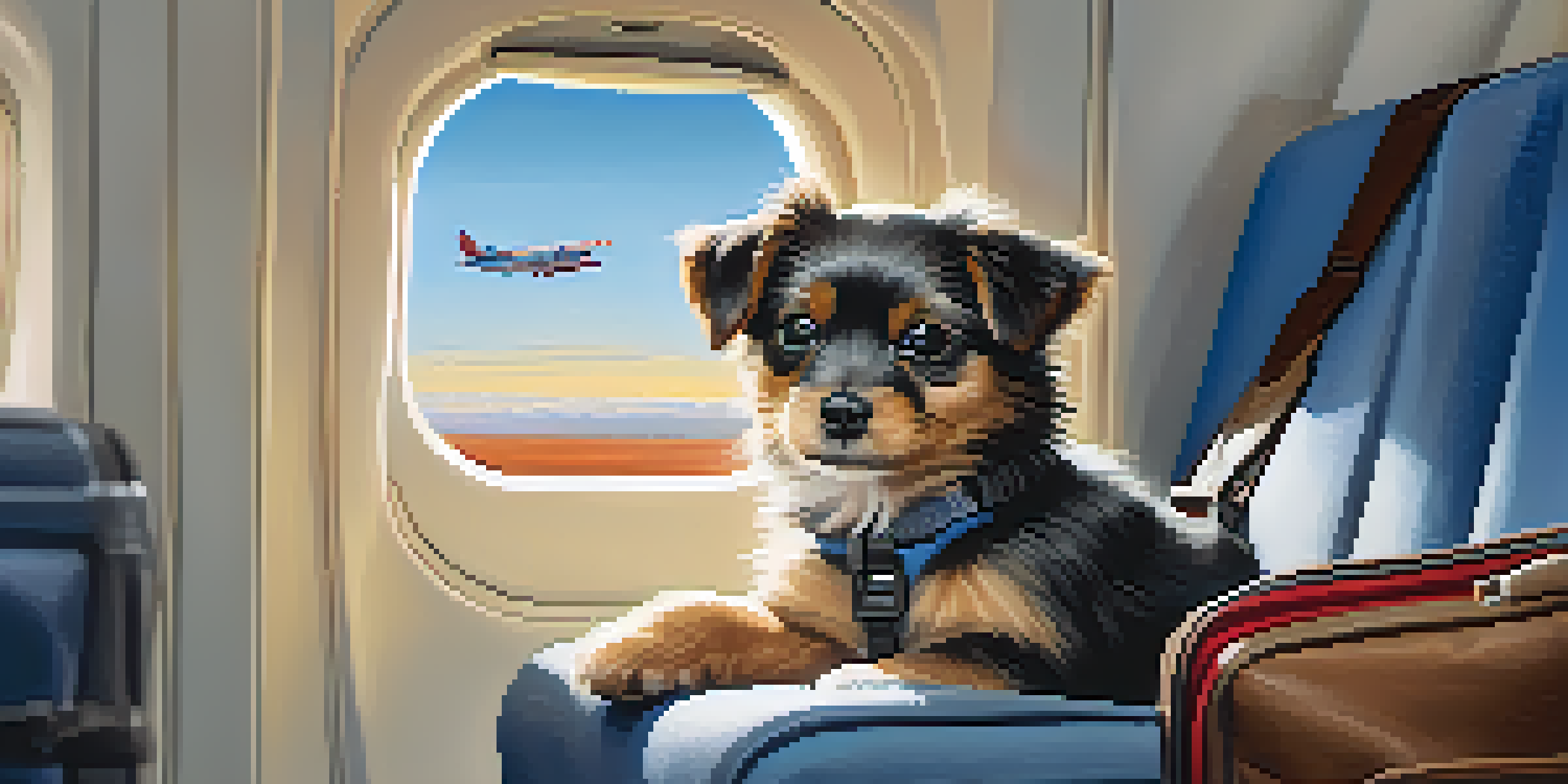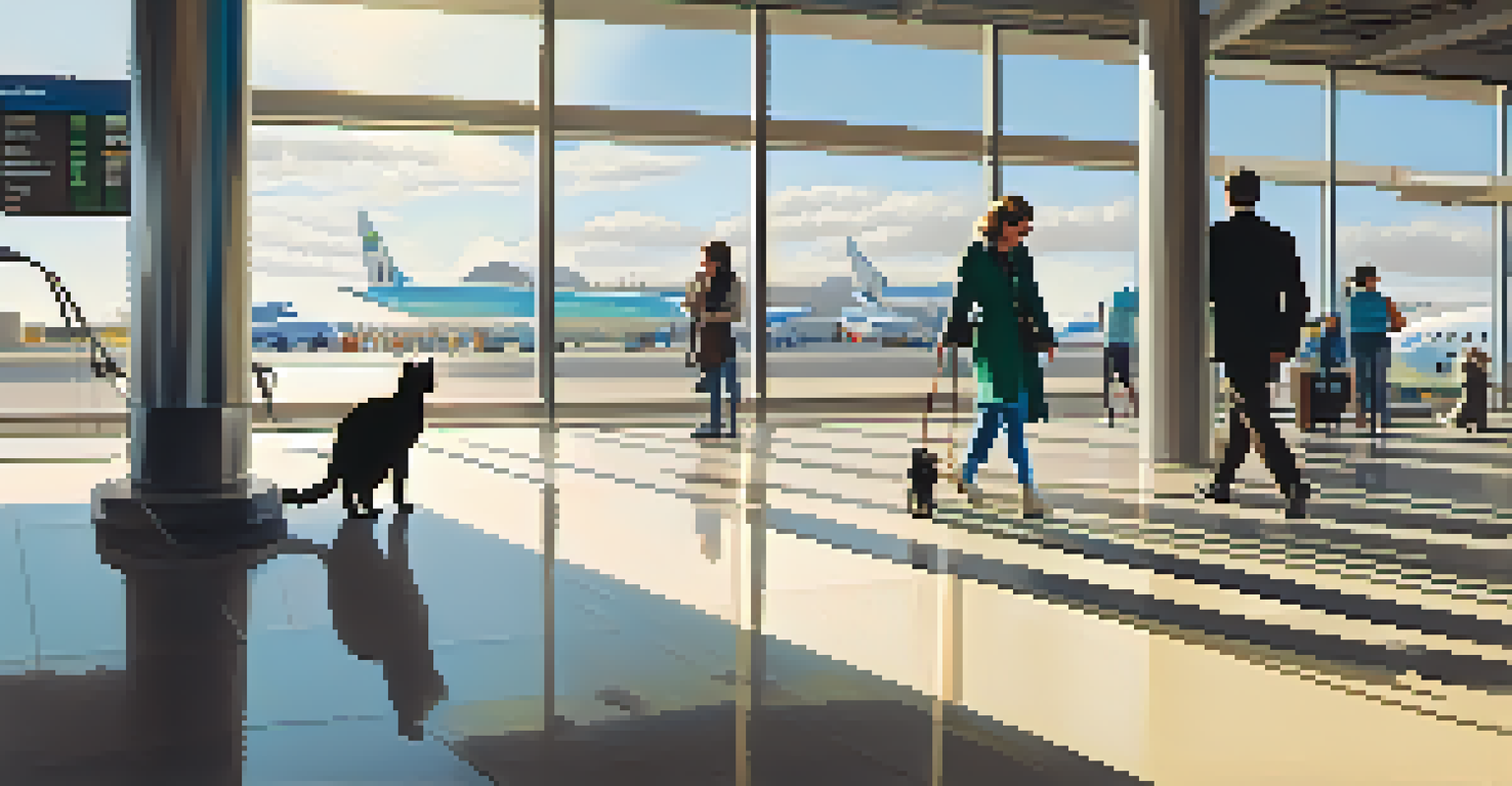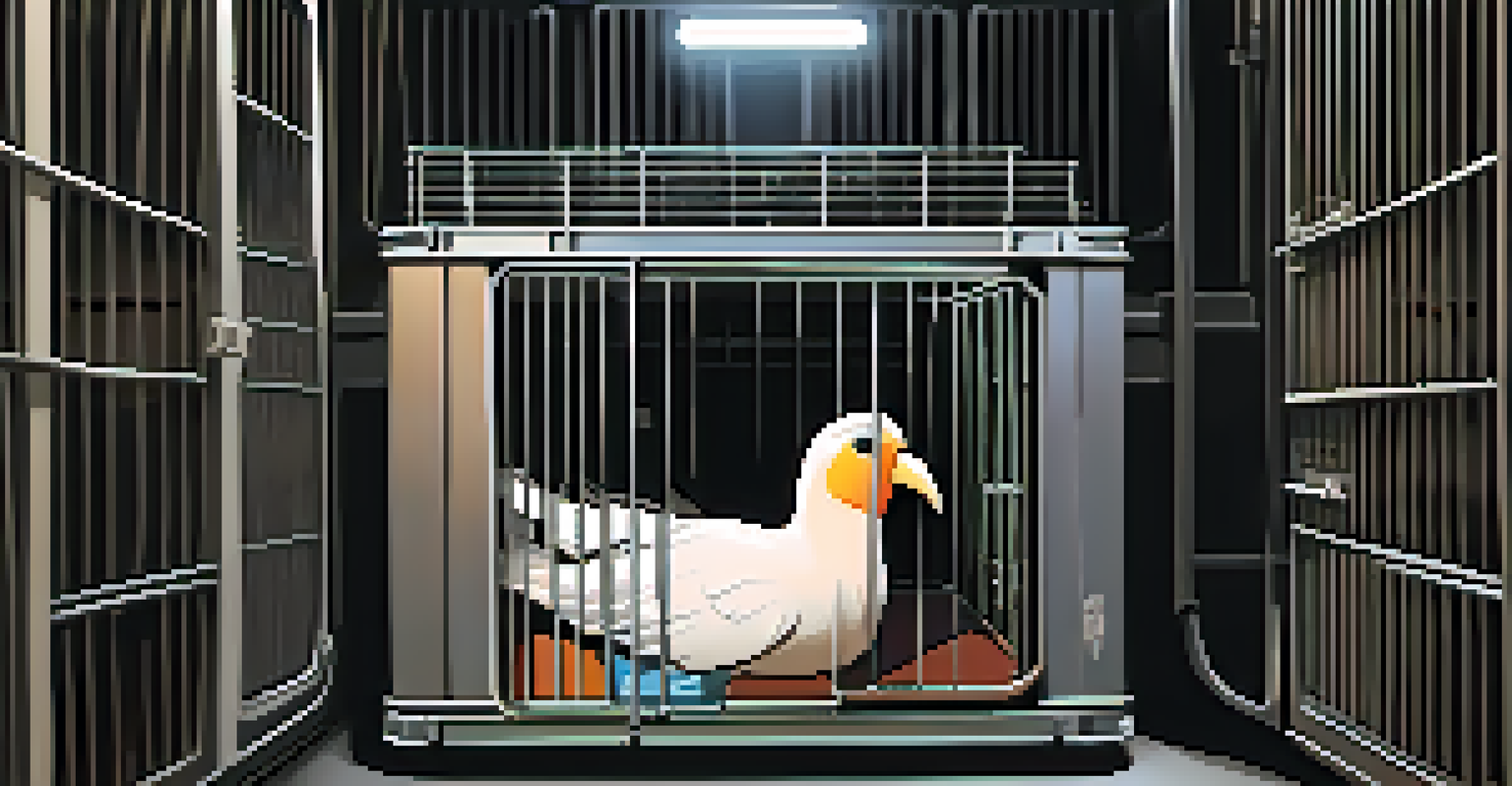Traveling by Air with Pets in Peru: Airline Guidelines

Understanding Peru's Airline Regulations for Pets
When planning to travel by air in Peru with your pet, it's crucial to familiarize yourself with the specific airline regulations. Each airline has its own set of guidelines that dictate how pets can be transported, including size restrictions, crate specifications, and health documentation. Understanding these rules ensures a smoother journey for both you and your furry companion.
Traveling with pets can be a wonderful experience, but it requires preparation and understanding of regulations.
Most airlines in Peru allow pets to travel either in the cabin or as checked baggage, depending on their size and weight. For example, if your pet is small enough to fit in a carrier under the seat, you may have the option to keep them close during the flight. However, larger pets typically need to be transported in the cargo hold, which has its own set of requirements.
Before booking your flight, it's wise to contact the airline directly to confirm their current policies and any changes that may have occurred. This proactive approach can help avoid any last-minute surprises and ensure that your pet's travel experience is as comfortable as possible.
Preparing Your Pet for Air Travel in Peru
Preparation is key when it comes to traveling with pets by air. Start by getting your pet used to their travel crate well in advance, as this will help reduce anxiety on the day of travel. You can do this by allowing your pet to explore and spend time in the crate, creating a positive association with their travel environment.

Additionally, scheduling a visit to the veterinarian is crucial to ensure your pet is healthy and up to date on vaccinations. Some airlines may require a health certificate issued by a vet, so having this document ready can save you from stress at the airport. Remember, a healthy and happy pet will make the journey much easier for both of you.
Know Airline Regulations for Pets
Familiarize yourself with each airline's pet travel guidelines to ensure a smooth journey.
Lastly, consider packing some familiar items in your pet's crate, such as their favorite blanket or toy. These items provide comfort and can help alleviate stress during the flight, making the experience more enjoyable for your pet.
Choosing the Right Carrier for Your Pet
Choosing the right carrier is essential for ensuring your pet's safety and comfort during the flight. Airlines in Peru typically require carriers to meet specific dimensions, so it's important to check these requirements before purchasing or using a carrier. Make sure your pet can stand up, turn around, and lie down comfortably inside the carrier.
The journey of a thousand miles begins with one step, and with pets, it begins with one crate.
Look for carriers that are well-ventilated and sturdy enough to withstand the rigors of air travel. Soft-sided carriers are often preferred for in-cabin travel, while hard-sided carriers are recommended for pets traveling in the cargo hold. Whichever option you choose, it's vital that the carrier is secure and properly closed to prevent any escapes during transit.
You might also consider labeling the carrier with your contact information and a note indicating that there is a pet inside. This small step can be helpful in case the carrier ends up in the wrong location, ensuring that your pet can be quickly reunited with you.
Navigating Airport Procedures with Pets
Arriving at the airport with your pet can be a bit chaotic, but knowing what to expect can make the process smoother. Make sure to arrive early to allow ample time for check-in and security procedures. Be prepared for your pet to be screened, which may involve passing through a metal detector or being swabbed for residue.
During check-in, inform the airline staff that you are traveling with a pet. They will guide you through the necessary steps, including paying any applicable fees. It's also a good idea to have all required documents, such as health certificates and vaccination records, easily accessible to present upon request.
Prepare Your Pet for Travel
Start crate training and visit the vet to ensure your pet is healthy and comfortable before flying.
Once through security, take your pet for a short walk if possible. This will allow them to relieve themselves and help burn off some energy before the flight. Keeping your pet calm and relaxed during this time will set a positive tone for the journey ahead.
What to Expect During the Flight
Understanding what to expect during the flight can ease your worries about pet travel. If your pet is in the cabin with you, keep them calm by talking to them or offering treats. It’s a good idea to keep their leash handy for quick access when you need to take them out of the carrier.
For pets traveling in the cargo hold, it's essential to know that they will be handled by airline staff during loading and unloading. While most airlines take great care in transporting animals, there can still be some stress involved. Ensuring your pet is comfortable in their crate and has familiar items can help mitigate this anxiety.
Regardless of where your pet is during the flight, monitoring their wellbeing is crucial. If you notice any signs of distress, such as excessive barking or whining, try to soothe them as much as possible. Remember, a calm and composed pet is more likely to have a pleasant flight experience.
Post-Flight Tips for Traveling with Pets
Once you've landed in Peru, it's important to consider your pet's transition to a new environment. Allow them some time to adjust, especially if you’re in a different climate or altitude. Take them for a short walk and give them a chance to explore their new surroundings at their own pace.
If your pet traveled in the cargo hold, check them immediately upon arrival to ensure they are safe and healthy. Look for any signs of distress or discomfort, and provide them with water and comfort after the flight. Reassurance from you can go a long way in helping them feel secure.
Manage Post-Flight Adjustments
Allow your pet time to acclimate to their new surroundings and maintain a familiar routine after arrival.
Lastly, maintain a routine as much as possible. This includes feeding times, walks, and playtime to help your pet acclimate to the new setting. A familiar routine will not only ease their transition but also reinforce the bond between you and your pet during your travels in Peru.
Traveling with Exotic Pets: Special Considerations
Traveling with exotic pets, such as reptiles or birds, comes with its own unique set of challenges and considerations. Different airlines may have varying policies regarding the transport of these animals, so it's essential to research in advance. Always check the specific requirements for your exotic pet’s species before making any travel arrangements.
In addition to airline regulations, you'll want to ensure that your exotic pet's habitat is secure and comfortable for travel. For example, a bird's cage should be sturdy and well-ventilated, while reptiles may require a more specialized carrier to maintain temperature and humidity. Providing the right environment is crucial to keeping your pet healthy and happy during the journey.

Lastly, be prepared for the possibility of additional documentation or permits, especially if your exotic pet is considered endangered or requires special care. Having all necessary paperwork in order can facilitate a smoother travel experience and help avoid any legal issues upon arrival.